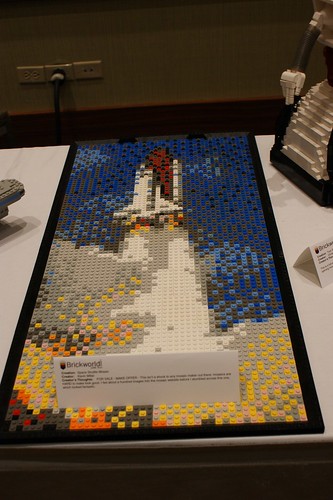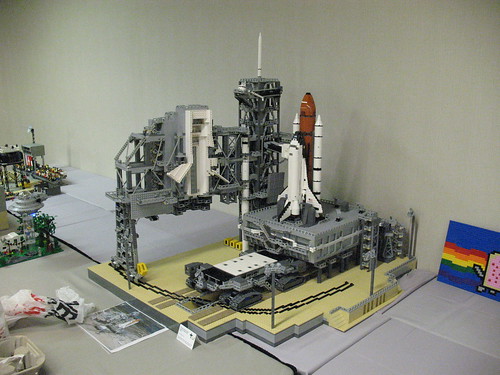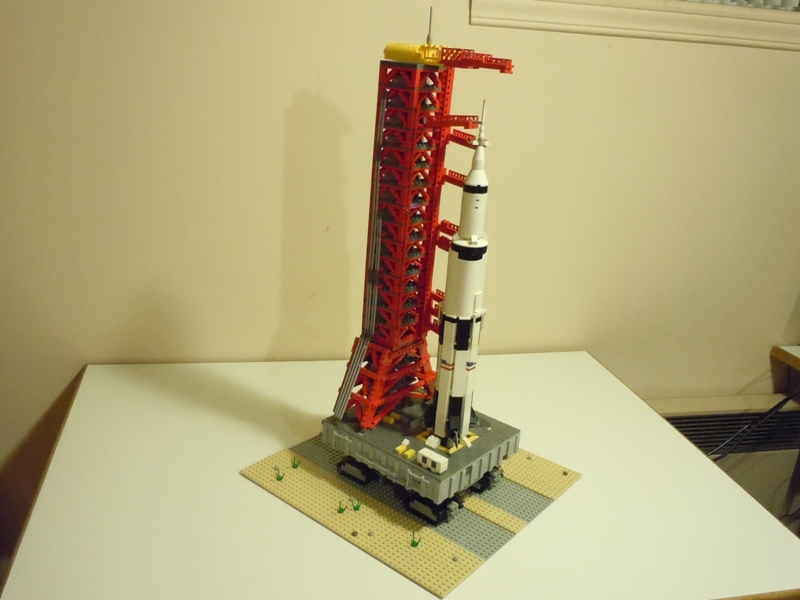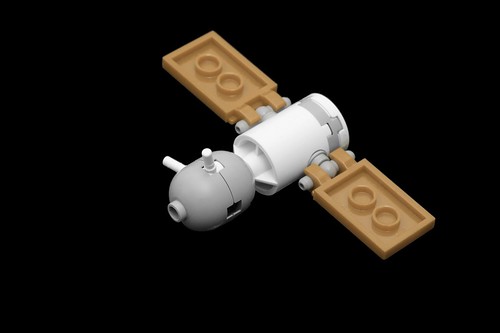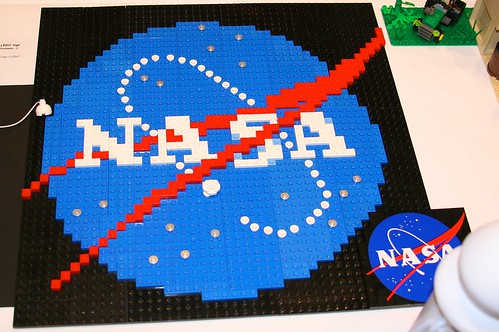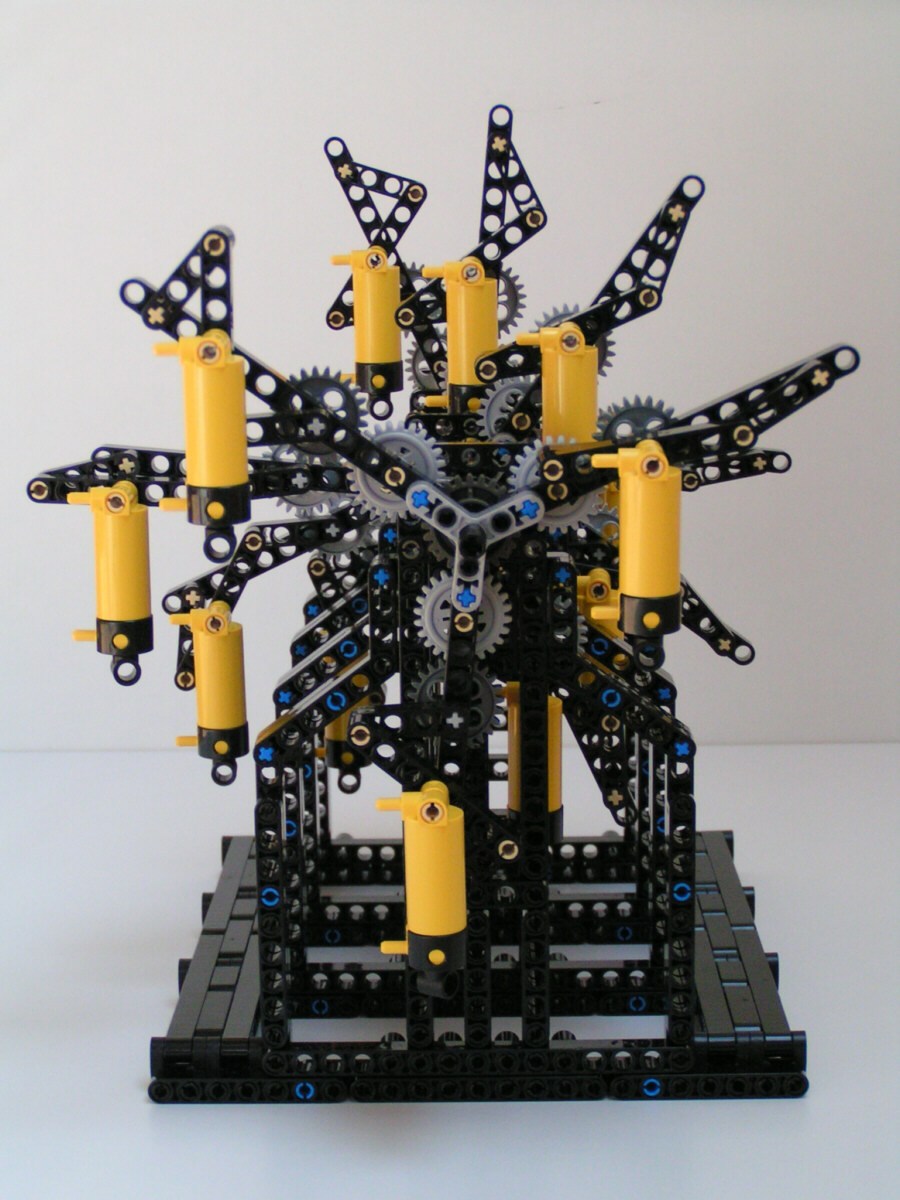
Friday, August 31, 2012
Perpetuum Mobile
A perpetual motion machine has long been a dream for many. If you could start one up, you could hook it up to a generator and have free electricity forever. The problem is, it just can't work, as it would violate the laws of thermodynamics. The first law could be construed as "You can't win" (that is, you can't get extra energy from nowhere) and the second is "You can't even break even" (entropy of the system increases, so it will run down due, for instance, to friction). Hmm, come to think of it, those are also the first two laws of Las Vegas. Anyway, this hasn't stopped people from trying. One scheme to produce a perpetual motion device is the overbalanced wheel, first proposed by Bhaskara in the 12th century. In this scheme there is a spinning wheel with weights on the spokes. On one side the weights are farther from the axis, but as these spin around to the other side they move closer in to the axis. A weight further from the axis produces a greater force, or torque. Since the weights on the left side in the picture below are further out than those on the right, this should produce a downward pull on the left side, and the wheel will spin counter-clockwise. Unfortunately it turns out that the energy produced by the weights moving down on the left is used to lift them up on the right and also to move them out from the center, and so no new energy can be produced. What's more, even if you give this a push and start it moving, friction will slow it to a stop. That doesn't stop Maarten Steurbaut's Perpetuum Mobile from being a beautiful and intriguing LEGO creation, though.


Thursday, August 30, 2012
Difference Engine
In 1822 Charles Babbage described the plan for a difference engine - a mechanical device that would use turning geared columns to calculate logarithms and trigonometric functions. Due to technical difficulties and cost overruns, it was never completed, and Babbage moved on to his analytical engine (unfortunately for mechanical computing, also never completed). Today, through the magic of LEGO, we can see his dream realized, the 3-digit difference engine by Aecarol.
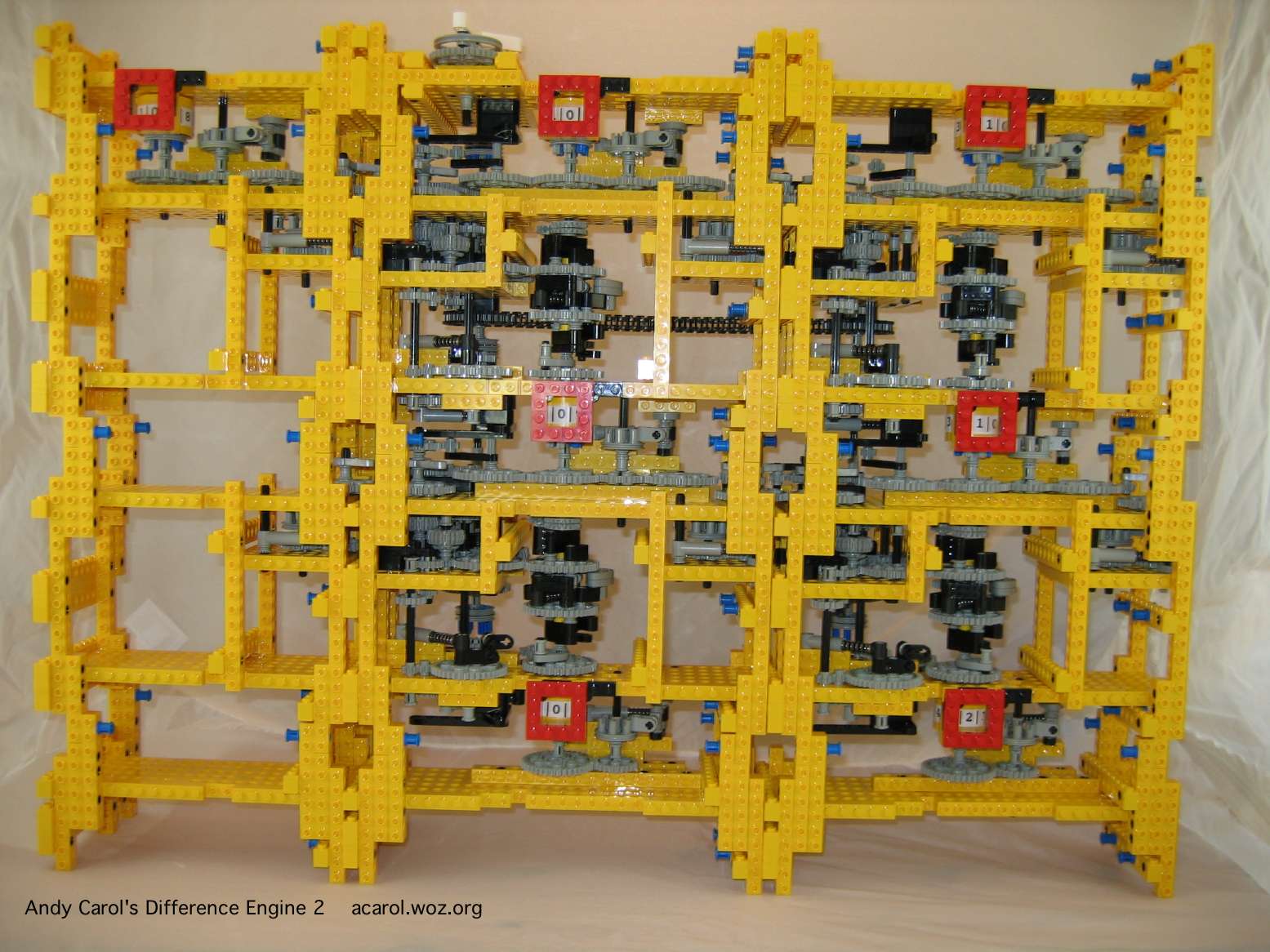
And here you can see it in action.

And here you can see it in action.
Wednesday, August 29, 2012
Digi-Comp II
Yesterday I discussed the Digi-Comp I, an educational toy that was a mechanical computer. The same company followed up with what was probably a more fun version, the Digi-Comp II. In this version, marbles rolled down a ramp, and depending on how you set different gates, they would roll to the left or right, flipping switches as they went, leading to the output of a mathematical problem. A bit like the game Plinko on the Price is Right, but the balls aren't just bouncing randomly. Here's a good explanation on a giant version. Brdavis built a LEGO version.
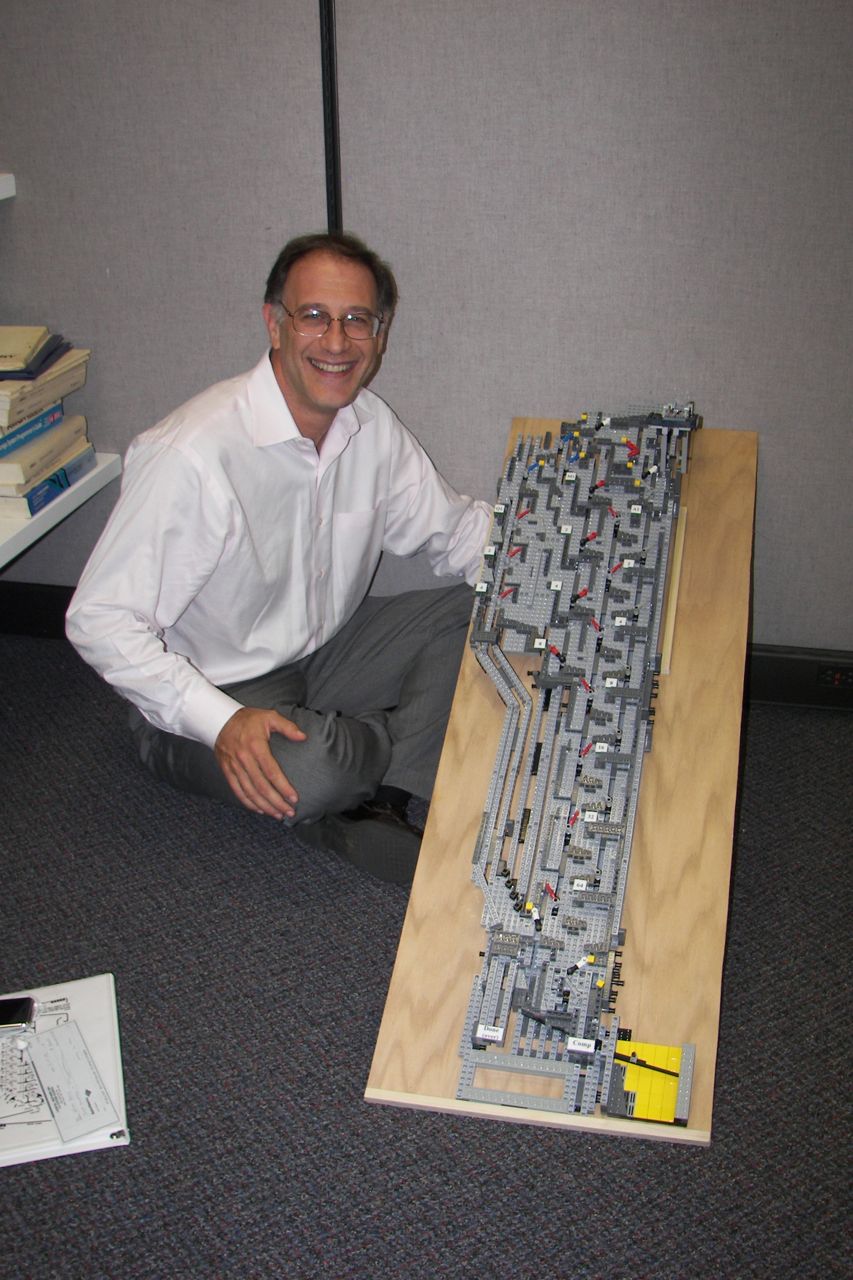
Here you can see it in action with his explanation.

Here you can see it in action with his explanation.
Tuesday, August 28, 2012
Digi-Comp I
A simple computer works by combining binary bits of data via logic operations. 0 OR 0 gives 0, 0 OR 1 gives 1, 1 OR 1 gives 1. 0 AND 0 gives 0, 0 AND 1 gives 0, 1 AND 1 gives 1, and so forth. Clever combination of AND, OR, NOT and IF functions allow you to perform mathematical and other operations on multi-digit binary numbers. Do this millions of times on a silicon chip and you've got the laptop I'm typing on right now. Before silicon chips, transistors and vacuum tubes, there were mechanical computers that work by physically moving switches or wheels to indicate the changes in value. An extremely simple example is the odometer on your car (if it's not electronic). Every so many rotations of the axle leads the tenth-mile wheel to move forward. Once that wheel turns all the way around, it causes the mile wheel to move forward one click. Once that goes around from 0 to 9, it causes the ten mile wheel to move forward one click. If you go 100,000 miles, or a million, or however many digits the odometer has (I'll have to go out to my car and look), the whole register clears and it flips back around to zero. This, of course, is an extremely simple mechanism only built to count in a forward direction. The early history of computing is all about the development of mechanical adding machines and other calculators.
This leads us to the Digi-Comp I. This was an educational toy sold in the 1960's where you move two levers back and forth, and depending on how you 'programmed' it, that is, how you arranged a series of wires, a little counter would give you the result of a simple mathematical operation.
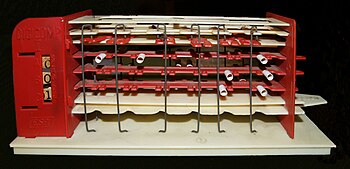
Recently Nico71 built a LEGO Digi-Comp I.

You can watch it in action serving as a counter.
This leads us to the Digi-Comp I. This was an educational toy sold in the 1960's where you move two levers back and forth, and depending on how you 'programmed' it, that is, how you arranged a series of wires, a little counter would give you the result of a simple mathematical operation.

Recently Nico71 built a LEGO Digi-Comp I.

You can watch it in action serving as a counter.
Monday, August 27, 2012
Neil Armstrong
Several people have made MOCs remembering Neil Armstrong after news of his death.
MooseBot.

Si-MOCs.

TheBricks.

Chiukeung.

The-Flash98.

MooseBot.

Si-MOCs.

TheBricks.

Chiukeung.

The-Flash98.

Sunday, August 26, 2012
Ornithology
Ornithology is the branch of zoology that focuses specifically on birds (Kingdom: Animalia, Phylum: Chordata, Class: Aves). Ornithology is a fun science in that anyone can get involved. I grew up with a field guide to North American birds and a pair of binoculars sitting next to our kitchen window where we could sit and watch the various birds (and squirrels) coming to our bird feeders. You can tell that DeTomaso is a bird lover as well, as he has made a large number of very accurate and lifelike models of different birds. He's done over 20 so far, and keeps on going. He's proposed this as a series of actual LEGO sets, which you can suppor on Cuusoo.
Scarlet Tanager

Robin

Goldfinch

Kingfisher

Scarlet Tanager

Robin

Goldfinch

Kingfisher

Saturday, August 25, 2012
Neil Armstrong 1930-2012
I just saw the news that Neil Armstrong passed away today at the age of 82. Here's Balakov's LEGO reproduction of a famous photo from the first moon landing. It's actually a photo of Buzz Aldrin, but it was taken by Armstrong.


Friday, August 24, 2012
One small step for man
Thursday, August 23, 2012
Polymerase Chain Reaction
DNA replication is the process that your cells use to copy their genetic blueprint. This occurs every time cells divide, so that each new cell has a complete set of instructions. The process involves unzipping the two complementary strands of the parent DNA, and then using free nucleic acids and an enzyme called a DNA polymerase to construct new strands to pair up with each of the parent strands.
Polymerase Chain Reaction, or PCR, is a process to run this replication artificially in a laboratory. This is often used to analyze DNA samples. Typically analysts get only a very small amount of a DNA sample, and by using PCR they can create a large amount of identical DNA to study. This might be used to identify a blood sample or other evidence at a crime scene, in something like paternity testing, or to identify the DNA of a bacteria or virus to diagnose disease. The Abbott m2000(R) is an automated instrument to run PCR testing to identify various disease agents. Dave and John from briXwerX have made a number of m2000 models on commission for Abbot Molecular.

Polymerase Chain Reaction, or PCR, is a process to run this replication artificially in a laboratory. This is often used to analyze DNA samples. Typically analysts get only a very small amount of a DNA sample, and by using PCR they can create a large amount of identical DNA to study. This might be used to identify a blood sample or other evidence at a crime scene, in something like paternity testing, or to identify the DNA of a bacteria or virus to diagnose disease. The Abbott m2000(R) is an automated instrument to run PCR testing to identify various disease agents. Dave and John from briXwerX have made a number of m2000 models on commission for Abbot Molecular.

Wednesday, August 22, 2012
Newton's cradle
A Newton's cradle (here in LEGO by Monsterbrick) is a device that demonstrates the principle of the conservation of momentum. Five steel balls are suspended from a frame so that they are just touching. As the ball on the left is lifted up and let go, it swings towards the other balls. When it strikes them it stops, but that momentum has to go somewhere. It is transferred through the balls to the right hand ball, which swings out. As this reaches the top of its arch it swings back, repeating the pattern. If there were no loss of energy due to friction this could go back and forth forever.
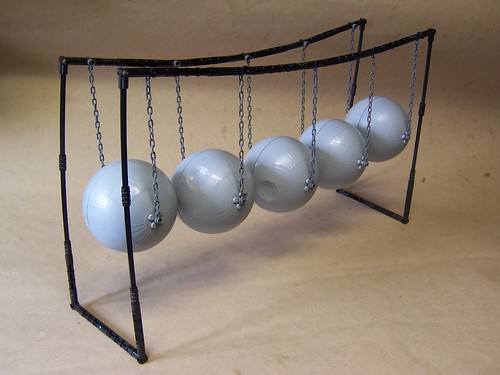

Tuesday, August 21, 2012
Monday, August 20, 2012
Parkes Observatory
We are all familiar with optical telescopes that allow you to see magnified views of distant stars and planets. Visible light is only a small portion of the electromagnetic spectrum, though. Electromagnetic energy is a series of energies that travel as waves and they differ in their wavelength (which relates to energy). Visible light is just that section of wavelengths that our eyes can interpret. Radio is another portion of the electromagnetic spectrum with longer wavelengths (lower energies) than visible light. Stars produce energies across the electromagnetic spectrum, and to fully study them we should observe all of these different types of energy. So in addition to optical telescopes, we need other instruments. One example is the 64 meter radio telescope at the Parkes Observatory in Australia. Ross Crawford has built a couple of different LEGO versions.

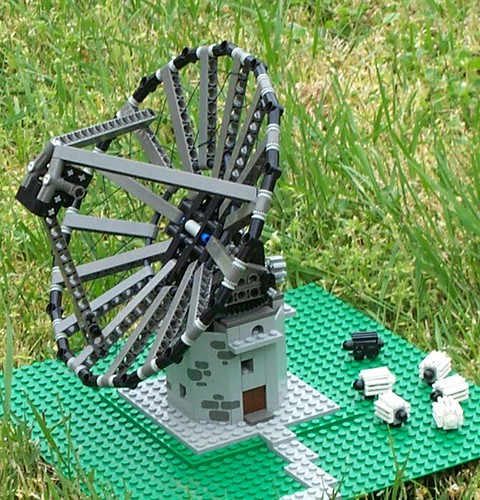


Sunday, August 19, 2012
Saturday, August 18, 2012
July 20, 1969
Legorevolution celebrated the Apollo 11 moon landing. There's so much to love about this model. In addition to the great figure, note how he did the surface of the moon, and the frame includes Armstrong's famous quote and micro versions of the Saturn V, the lunar lander and the command module.


Friday, August 17, 2012
Thursday, August 16, 2012
Pythagoras in action
LEGO is built with primarily right angles, but the Mad Physicist shows us how a little bit of math can be used to come up with all sorts of other angles. In this example he takes advantage of the pythagorean triple 8, 15, 17. That is, a triangle with a right angle and two sides that are 8 and 15 units long will have a third side that is 17 units long (he actually cuts all of these measures in half).
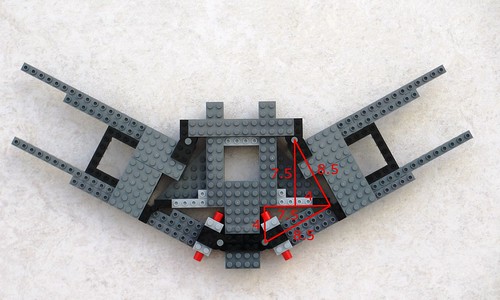
Here's another pythagorean triple, a 3, 4, 5 triangle in Technic beams by Blackbird.


Here's another pythagorean triple, a 3, 4, 5 triangle in Technic beams by Blackbird.

Wednesday, August 15, 2012
Fusion power
There's one important source that I did not cover in my recent series on energy, because it has not yet proven to be commercially viable, is nuclear fusion. Fusion is the process that occurs in stars. As small atomic nuclei fuse together to make heavier nuclei, energy is produced. Nuclear fusion could prove to be an incredible source of energy, since the fuel source, hydrogen, would be readily available from ocean water, and the byproduct, helium, is environmentally benign. Unfortunately, it has so far been difficult to contain and perpetuate the fusion reaction process. One important step in bringing the promise of fusion to fruition is the ITER reactor being built as an international cooperative project in France. So far, though, this project has run into technological, budgetary, and bureaucratic problems, as described in a recent Scientific American article. That article was illustrated with a LEGO model of the ITER reactor by Sachiko Akinaga, and the Scientific American blog has more photos.


Tuesday, August 14, 2012
Monday, August 13, 2012
Sunday, August 12, 2012
Kennedy Space Center
Teazza created this amazing version of Launch Complex 39-A (including his shuttle Crawler-Transport) and the Vehicle Assembly Building.




Friday, August 10, 2012
Sylvia Earle
Sylvia Earle is one of the world's leading oceanographers, having led more than 60 scientific expeditions with over 7000 hours underwater. Pixbymaia has made a LEGO version of Dr. Earle and even had the opportunity to pose with the original.
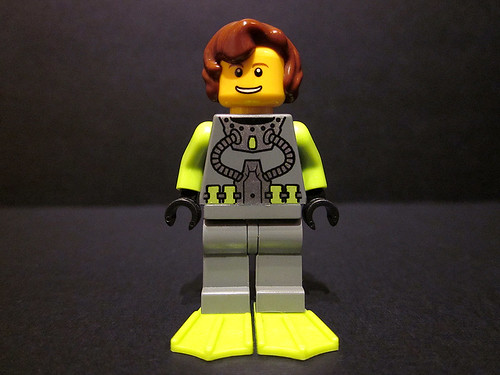
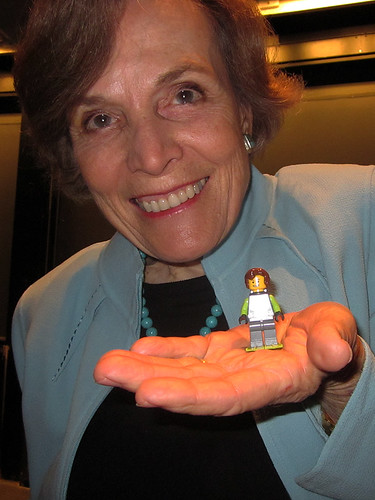


Thursday, August 9, 2012
Wednesday, August 8, 2012
Tuesday, August 7, 2012
Solar power
All of the electricity generation discussed so far has involved turbines. Either water is heated (by burning fuel or from nuclear fission) to make steam, that turns turbines, or wind, water or waves turn the turbines directly. Solar power works on a completely different principle. In the photovoltaic effect, absorbance of light energy causes some substances to emit electrons. In a solar cell, this movement of electricity is captured as an electric current. Unfortunately, while this has great potential as a renewable resource, it is still not used very much. A couple of years ago solar accounted for 1% of US electricity and estimates suggest this will rise to 4% by 2020. Many LEGO creations, particularly futuristic ones, feature solar panels, such as Annie Corder's city,

Doctor Sinister's Aurora Station,
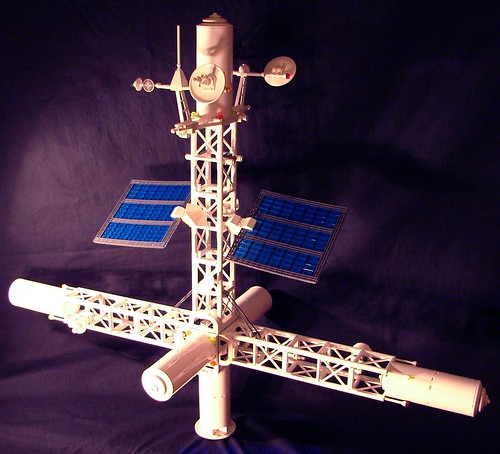
and Zg1134's WALL-E.

Here's a solar power installation from Legoland Billund.
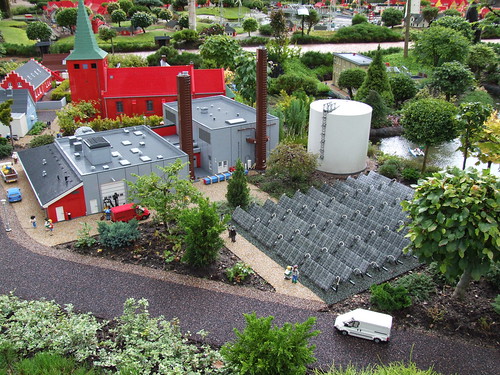
LEGO has even made two official real solar cell elements that are used in a few of the educational Dacta sets.

Here Peter Hoh used one of them to make a solar-powered car.

And that's it for our little foray into understanding how electricity is produced. I'll go back tomorrow to a series of more random MOCs that have popped up recently.

Doctor Sinister's Aurora Station,

and Zg1134's WALL-E.

Here's a solar power installation from Legoland Billund.

LEGO has even made two official real solar cell elements that are used in a few of the educational Dacta sets.

Here Peter Hoh used one of them to make a solar-powered car.

And that's it for our little foray into understanding how electricity is produced. I'll go back tomorrow to a series of more random MOCs that have popped up recently.
Monday, August 6, 2012
Seven minutes of terror
I'll come back to energy tomorrow, but I wanted to take a moment to congratulate the scientists and engineers at NASA on the incredible news from Mars. I'm sure if you read this blog you already picked up on this, but yesterday Curiosity landed safely on Mars. The landing used a very unique system. First a parachute helped slow down the landing vehicle, then rockets slowed down the descent stage even further, until it was left hovering about 25 feet above the surface of the planet. Then the Curiosity rover was lowered down from this 'sky crane' on cables, to touch down and roll off on its merry way. Alex Kobbs (Kooberz) made a fun video of this landing.
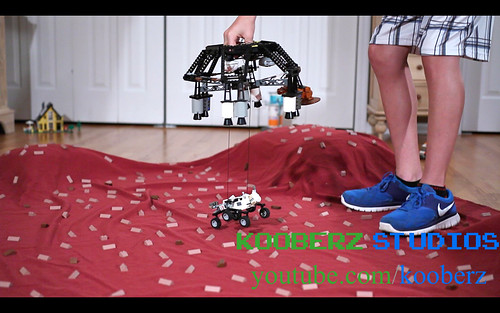

Sunday, August 5, 2012
LEGO and wind power
LEGO has an extensive record with wind power. In their educational Dacta line, sets like 9684, Renewable Energy and 9688, Renewable Energy Add-On help kids create science experiments to learn about wind power.

In 2008 they created an exclusive set, Vestas Wind Turbine as part of their cooperation with that company (see yesterday's post). Unfortunately for LEGO fans, that set was very limited, and only available to Vestas employees.

Probably in response to the huge AFOL interest in the exclusive Vestas set, the following year LEGO released 7747, Wind Turbine Transport.

Wind turbines have also been featured in the Legoland parks, such as here in Billund.

A larger wind farm is being built at Legoland Billund, to celebrate LEGO's billion kroner investment in a wind farm being built off the coast of Germany. The company is committed to using 100% renewable energy by 2020.

In 2008 they created an exclusive set, Vestas Wind Turbine as part of their cooperation with that company (see yesterday's post). Unfortunately for LEGO fans, that set was very limited, and only available to Vestas employees.

Probably in response to the huge AFOL interest in the exclusive Vestas set, the following year LEGO released 7747, Wind Turbine Transport.

Wind turbines have also been featured in the Legoland parks, such as here in Billund.

A larger wind farm is being built at Legoland Billund, to celebrate LEGO's billion kroner investment in a wind farm being built off the coast of Germany. The company is committed to using 100% renewable energy by 2020.
Subscribe to:
Posts (Atom)
